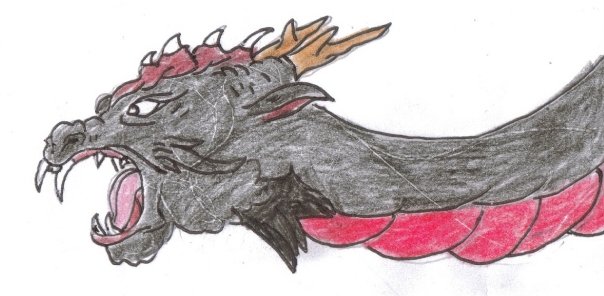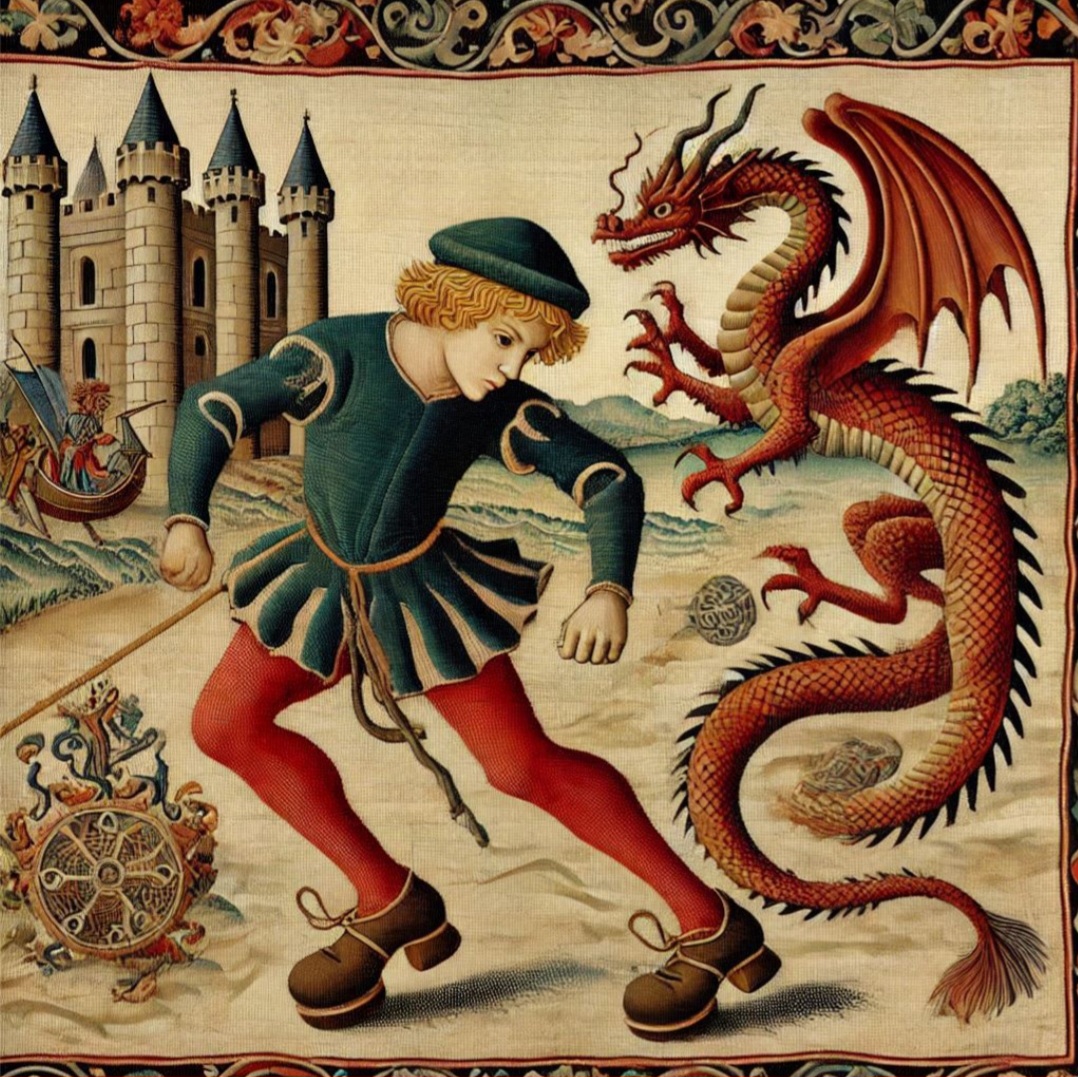Claw Scuff Stepping
Rhythmic servitude, that's all it was. You can't call it a language - they were simply mimicking the intricate clicks and growls of a dragon with their feet. Those beasts were trained to respond to rhythmic commands, nothing more."Claw scuff is a contentious form of communication that was used by claw keeps to direct and command the dragons they cared for. The claw keeps would wear inflexible, wooden soled shoes, which they would manipulate in order to produce a series of taps, scuffs, stomps and clicks that were intended to replicate the voclaisation of dragons. Most imperial linguists are loathed to assign claw scuff the status of 'language', which is a point of contention between Kredasene folklorists and historians, and their Raskvaerii overlords. The Kredasene argument is not helped by the fact that, in the time following the Great Confiscation and the Raskvaerii Invasion, claw scuff has developed into an intricate dance form in its own right.
Ostlers: Stewards of Dragons
Dragons are believed to have first come to Kredashmi 324 HE. Blown to the shores during a violent storm, it is said that many of those who sheltered in Drachenruhebaai (or 'Dragonsrest Bay') were exhausted and injured. It is not clear what country they fled from beyond the Unending Sea, or what type of persecution they were fleeing. Approached by members of the Rhaelen Clan, the dragons were presented with meat and water, and eventually submitted themselves to the care of Rhaelen's healers.Origins of Claw Scuff Stepping
The exact circumstances around the creation of claw scuff stepping is unknown, but is largely believed to have resulted from claw keeps trying to replicate the vocalisations of the dragons with their thick, wooden soled shoes. In winter, these shoes would be modified with a hardened leather, covering over the toe and heel of the shoe, in order to create more grip on the stone cobbles in poor weather. The creation of the individual commands, and more complicated sequences, is likely to have occured due to trial and error. The more extravagant and striking steps and tricks, associated with modern claw scuff stepping, is believed to have emerged as an attempt by claw keeps to try and out-perform each other during their down-time. Some historical sources detail claw keeps dancing for the amusement of their dragons, or dragons joining in with their keepers in a strange duet, vocalising patterns that their human would then try to repeat.Apart from the shoes, another key item in claw scuff stepping is the use of a corded length of tough, braided leather, similar to the riders' riding crops. These leather braids measured between 18 to 28 inches, and were used by the ostlers to catch the dragons' attention and direct them. The rhythmic swinging, cracking and whipping of the cord was used to reinforce the commands given by the claw keep's stepping. In post-Invasion, Kredasene society, another dance form has grown up around the use of these cords: clawbraid dance. This dance reinforces the unpopular opinion that claw scuff stepping is not a language, but purely an art form. Historical accounts detail this tradition being danced at merrymoots and other social gatherings long before the Raskvaerii Invasion, usually as a display piece, accompanied by fast-pace music from fiddles, drystlewynd merkordeon and snaredrums.
It is summised that this tradition was created by groups of claw keeps dancing together during work breaks. They form a chain by holding their cords. Without breaking this chain, the dancers utilise a fast rhythm to weave in and out of one another, twisting the cords above their heads or in front of each other, to create 'displays'. It is common for the dancers to jump or backflip over the braids.
“It’s not... it's not a dance, Nathalii. Not in the way that you think. It’s a form of communication, between a dragon and its ostler. The steps, the rhythm — they're layered to convey meaning, not to be performed. It's meant to convey a message. A command. Whatever the beast needs to understand.”
Commands and Rhythms
In its most basic form, claw scuff stepping are a way for humans to communication with dragons. Each step, or combination of movements, convey specific commands, creating a rhythmic language that is rooted in the close ostler-dragon bond. The Call: This movement signals to the dragon that its claw keep is about to issue instructions.- Stepping: The ostler rises onto the balls of their feet, and smartly clicks their heels together three times in quick succession.
- Auditory Components: This is personal, usually characterising the relationship between the claw keep and the dragon. Some ostlers whistled sharply through their teeth. Others cracked their braided cord. Others paired it with a shout. Tobias Valen, an accomplished claw scuff stepper, was known to shout, "GETCHA, BOY!"
Back up
- Stepping: Body positioned sideways-on to the dragon, feet move towards the beast. Drag-STOMP. Drag-STOMP-STOMP. Repeat until the beast moves in the direction commanded.
- Auditory Components: Flicking or cracking the cord, depending on the temperment of the beast.
Halt:
- Stepping: Stomp-stomp, stand still.
- Auditory Components: Verbal command of, "woah!"
- Stepping: Shuffle tap-step-heel, change foot, shuffle tap-step-heel.
Forward/Walk On
- Stepping: Hopping-double-rounded shuffles. Alternating feet. Step-rounded shuffle tap-hop-rounded shuffle tap, change foot.
- Auditory Components: Occasional, sharp whistling.
Notice/Look Back
- Stepping: With your feet in four o'clock position, kick the heel of your dominant foot against your grounded heel.
- Auditory Component: Scrape the cord on the floor then whip it on the ground.
I swear, the Raskvaerii would rather shit in their hands and clap than admit there's any beauty or meaning in what the Kredasene do.







I love this so much. Stupid Raskvaerii!
Explore Etrea | March of 31 Tales
Thank you. I'd love to expand the commands section, but I've no idea if it works/makes sense
It makes sense to me!
Explore Etrea | March of 31 Tales